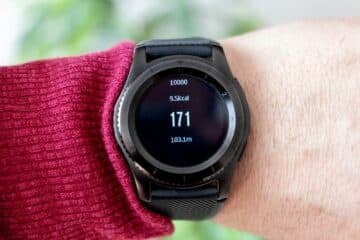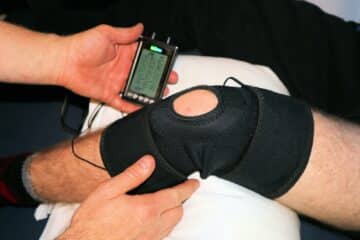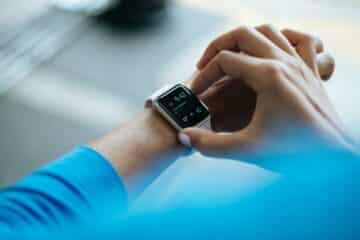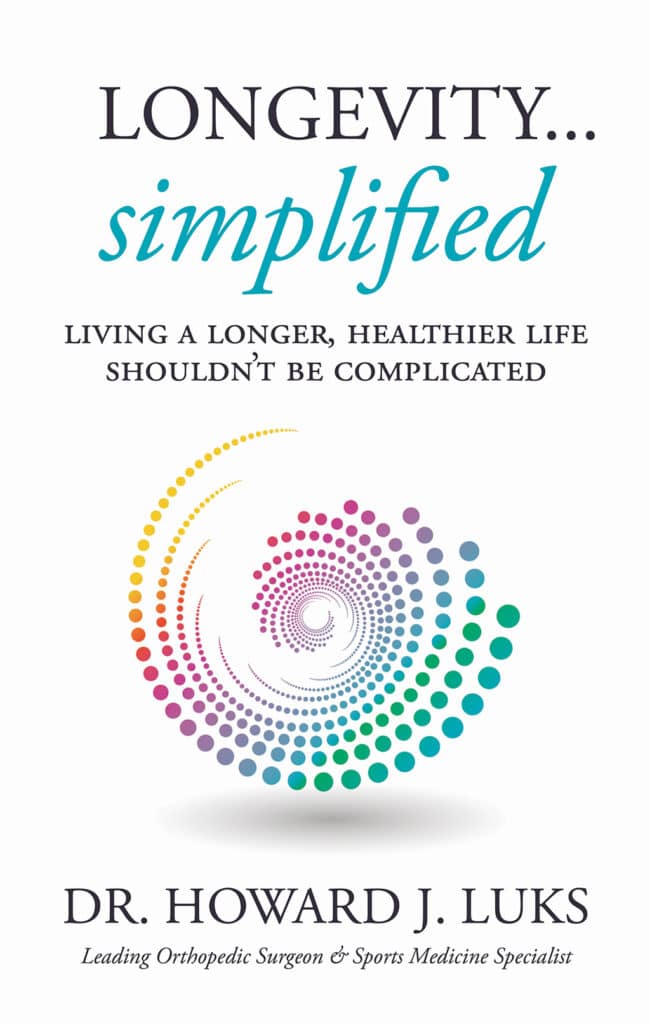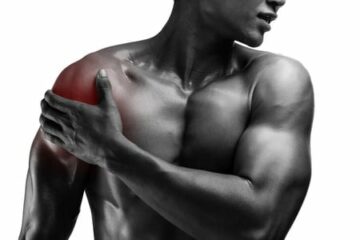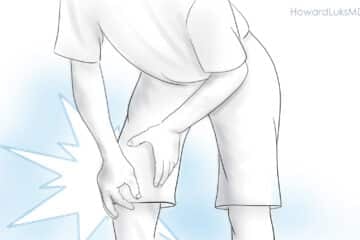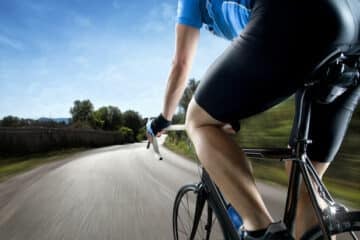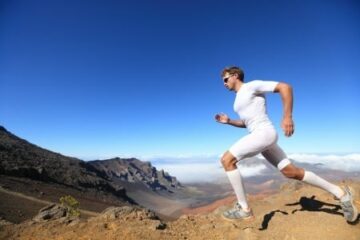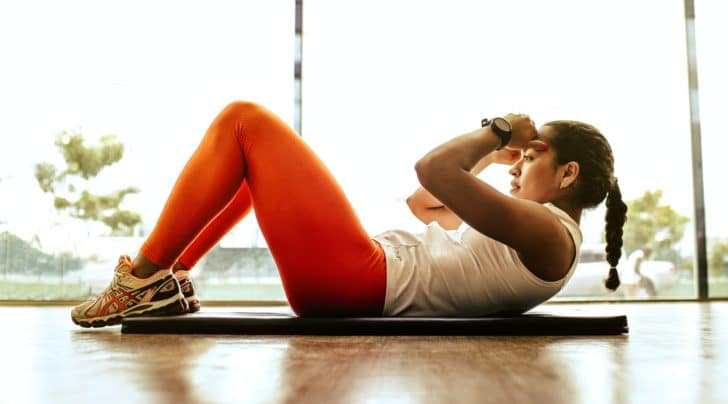
Show Notes
Paul and Howard talk about injuries, how and why they happen, and why they keep coming back.
Topics:
- Why injuries happen
- Acute vs chronic injuries
- The origins of overuse problems
- Training errors and injury cycles
- Becoming a resilient athlete
Readings:
Music:
“Crossing the Chasm” by Kevin MacLeod (incompetech.com) licensed under Creative Commons: By Attribution 3.0
Disclaimers apply (at the end of the episode).
About The Show
Simplavida is about smart services and tools for simplifying longevity. Its co-founders are Dr. Paul Kedrosky and Howard Luks M.D.
Paul Kedrosky is a frequently injured athlete and a venture capitalist. Howard Luks is a top sports orthopedic surgeon. Smart, candid, and experienced analysis, ideas and tips about health, fitness, and longevity from two athletes and sports orthopedic surgeon—and guests.
Listen & Follow
Transcript
Howard: [00:00:00] The more encumbered our joints are by shoe wear the less that we’re going to rely on our ligaments
Paul: [00:00:15] Had that had that had that Achilles tendinopathy proximal have the streak to I’ll go there’s another one. It’s like I could shut up bingo at some point
Paul: Let’s talk a little bit about we get injured and I was looking at some data on this and was surprised. the age-adjusted rate of sports or activity related injuries is about 34 per thousand which is three per hundred it’s pretty small. people worry an awful lot given he thought about this is disease. It’s not a very common disease this whole Sports Injury thing.
A couple more stats that I thought were interesting almost half of all injuries retreated outside of an emergency department and something like only three percent required hospitalization. So it’s essentially this is I don’t know DIY injury stuff. I mean as much as we talk about an awful lot of things becoming peer Centric whether it’s taxi drivers, it sounds like sports injuries people think they can fix all of this themselves
Howard: [00:01:09] Often we see two really distinct groups of people we see those who wait and wait and wait because they assume it’s going to get better and for sprains and strains that might be fine. But these are sometimes people would grossly unstable knees and they keep falling down. And then we see those who are going to come to our office, within an hour of rather innocuous injury, with the presence of urgent care clinics now on every block is it’s inevitable that people are going to utilize those more frequently.
Paul: [00:01:48] does it surprise you that most injuries activity related involve probably males. Although I didn’t pull that up but it’s between the ages of 5 to 24 years. That didn’t surprise me very much as a speaking as a male who got injured a lot during that period.
Howard: [00:02:04] Yes, and I also find that inebriation is a big causation issue for non sports related sports injuries. So ligament injuries dislocations as a result of not really being in control of what you’re doing.
Paul: [00:02:22] Yeah, which goes to one of the the other stats. I pulled out which was that the highest percentage of injuries reported in this study, which was from 2016 was related to a fall. there’s goes directly to the point. You’re making that one of the groups most prone to Falling are people who’ve overindulged and clearly that leads to problems.
Howard: [00:02:37] Yes, well as to Trail Runners here, we fought frequently when we make a poor decision to try and pass someone on a 12 inch wide piece of terrain.
Paul: [00:02:49] Yeah, guilty as charged here, but this whole idea of balance and proprioception and how important those are and how quickly we lose it because I think about growing up we used to have this thing we did around the house I grew up on a farm and we used to actually walk the log fence around the perimeter of the property and it was quite a narrow wobbly fan. But yet we did it without even blinking twice would have a conversation with my brother’s while I was doing it if you put me back on that log fence today disaster would strike.
Howard: [00:03:19] it’s a fascinating area for me and anyone who follows my blog knows that this has been become a distinct interest of mine as I’m starting to optimize and. Prioritize my own health well-being and desire to be an endurance Runner and athlete for many more decades to come so balance and strength are such critical issues people they’re catching them. Feet on rugs that tripping there they stand up and they wobble a little and they don’t think twice about it and they just think it’s a normal age-related effect, or maybe they don’t even realize it but this portends a big problem for them in the coming decades.
Paul: [00:04:07] to other data points that struck me were one was that sprains and strains where the the single biggest type of injury that we saw in that tent and tied to that tend to be lower extremities that we saw see the most injuries. Is that any surprise at all there, too?
Howard: [00:04:22] No, not none at all. Ankle sprains are extraordinarily common foot sprains as well knee injuries to one caveat that I would all just stick in here is it’s amazing how people underestimate the severity of these injuries. Especially ankle sprains most considerate and innocuous injury and assume that they’ll be back on a basketball court or out running within a week or two and it’s simply not the case and a fair number of people will have chronic pain because of these simple sprains. So it pays to seek out someone for attention and for some direction and how to rehab
Paul: [00:05:08] Yeah, we alluded to it earlier this I had a pretty nasty ankle sprain from trying to stupidly pass someone on a narrow Trail. it’s still it’s like months later and , I still know what happened. it’s interesting how long these things take. But just on. The topic of ankle sprains. What is it about the ankle that makes it is other than this that we happen to stand on the things there’s something unique about the physiology the geometry an evolutionary explanation. Why are these particular joints? So prone to these kinds of injuries?
Howard: [00:05:34] I wish I had a very sophisticated answer to that. I think there’s a lot of reasons one has to be sure, we sort of don’t subject our joints to the proprioceptive challenges that they’re used to. proprioception is joint sense joint position without looking at your joint knowing what position it’s in and it enhances or increases stability and the more encumbered our joints are by. Shoes wear shoe wear high-tops Etc the less that we’re going to rely on our ligaments the less. We need to rely on our balance the less proprioception that we possess perhaps more injury-prone that we are we’re also not training right? We’re not training in balance and proprioception. And we’re using turf shoes on sticky fake Turf our feet are planting cutting and twisting and there’s no give beneath and that really helped set us up for the whole host of injury patterns.
Paul: [00:06:50] Yeah, it’s really striking when you look at the data how it’s centers on particular parts of the body and I’m sure she wears a big part of it. So having gone through the day at a little bit. Let’s talk a little bit about why we get injured and one of the questions I was just saying to you. This before we started recording I was talking to a friend of mine the other day and he said is it normal to feel like my knee folds a bit backwards now as I get older and I thought it was interesting because I think a lot of people don’t even know whether they’re injured. Like how do we know if we’re engaged obvious if a leg breaks, but outside of that, I think a lot of people struggle to know like what even is, what’s normal especially as an aging athlete.
Howard: [00:07:29] Up to the definition of an injury, most people over the age of 30 35. They’re not actually injured. At least sixty or seventy percent of people that I see in my office have no idea why they have pain now when we dive deep into the etiology or the cause we may find a training error or running error, whatever it may be but most woke up with the with discomfort. They woke up with a nice wall on or they don’t realize that Sony is buckling and giving out on them
Paul: [00:08:06] Yeah, and it’s too easy to say this is just something that happens to people at my age my knee starts to hurt by this happened to my parents their knee started to hurt it and people I often feel like just don’t even know what they should expect from their body because they’ve not really they’re not really in tune with what it should be doing, right?
Howard: [00:08:25] Correct. They write it off or the not even aware of it, we’ll pick up on gate patterns in the office which clearly show that someone has a hip issue or a knee issue and I’ll ask about it and they’ll say oh, yeah, it takes a little bothers me a little like you’re walking rather strange. Let’s look into this. Okay, and then we find something
Paul: [00:08:52] it’s it really is gate and even gate we training which is a much broader topic and that it’s it’s it’s such an interesting area because people have no sense at all of what it looks like and if you show them if they actually see on video how they’re running or even how they’re walking people often just stand back and say, oh my goodness. I had no idea. My legs are shooting out to the sides my arms are doing this and so on right?
Howard: [00:09:13] Yeah, I consider it a curse from for me. I’ll be walking with my kids in the city. We were up on the Highline less weekend walking through Manhattan and you can look at people and know what’s wrong with them either and
Paul: [00:09:29] Like I can see what you need to look at it and say hey I can see where this is going and this may not turn out very well and I feel like I’m watching a movie and I know where it ends. So so let’s talk a little bit about types of injuries and just to give a taxonomy because we use our words we’re going to use a lot but it’s broadly a difference between acute chronic and overuse injuries and , put them in context for us.
Howard: [00:09:50] Acute injuries are a slip fall you twist your ankle you roll your ankle. You have an ankle sprain your falling down. You grab onto the banister or another player your shoulder gets yanked and it dislocates. Obviously, these are easy to put in context when contrasted to more chronic or overuse injuries overuse injuries really fall under The Chronic. Injury condition from a classification perspective and that’s the vast majority of injuries that I see in at athletes, especially in Runners right runners run too fast, too often. Yeah, slow cadence fast Kaden’s altered gate patterns weakness patterns. And so these injuries are often times will creep up on peon and people slowly and they won’t even see them coming. So. in some academic practices where they treat a lot of football players and a lot of the teams, maybe they see far more acute injuries than chronic but for me for a routine outpatient practice by far the majority of injuries that I’m seeing. Are chronic injuries their parts that are starting to wear out for various issues that we’re going to get get into or are on training errors are getting us
Paul: [00:11:25] one of the ways that I try to think through it is that acute injuries at least the low-grade acute injuries tend to take care of themselves. So I in a weird way, I don’t need to think about it too much, it’s a minor tweak and it’s going to go away. I don’t need to see anybody, but that. major acute problems. I broke something. I had a major sprain or something. These are things I need to see someone about because it may not take care of itself. And then chronic injuries are those weird ones where you can you can ignore it for a long time, but eventually it gets in the way of performance. its kind of Insidious in that way that you don’t realize how much it’s holding you back. Where is it cute ones they seem to kind of split along severity if it’s really bad well and I obviously have to see someone right away, but if it’s not so bad. Well, it’s a week off running.
Howard: [00:12:04] Absolutely. However, those of us who look past some we would turn mild acute injuries, maybe find ourselves staring down, a stress fracture of. Femoral neck in our hip is, devastating injury. So the really is an art to figuring out what injuries can I sit back on and ignore and which of these little festering problems are about to become a Calamity for us.
Paul: [00:12:36] that’s a really good point. The other side of it before we go on is I often think about this idea of the worried. Well write a lot of people when they feel something starts to hurt their first thought is either I need to stop what I’m doing , or maybe I need to go see a doctor right away and it prevents them from actually being active because they’re spending all of their time worrying about every ache and pain might be symptomatic of a stress fracture. It’s not just a sore muscle.
Howard: [00:12:58] Yeah, a lot of that is built on prior experience, we’ve talked about the psychology of recovery, and I’m sure we’ll dive into this deeper. But once you’ve been down the past and dealing with a chronic injury, perhaps brought on by ignoring what was initially a mile. Acute injury you realize what happened from your poor decision-making and you’re going to deal with these future injured differently. Sometimes a bit pathologically in terms of how much you worry about
Paul: [00:13:33] Yeah, so let’s take that the next step and talk about why we get injured and how people setting themselves up for injuries, you and I have talked a lot in the past about heart rate training and. Zone running and all these kinds of things about how to build a base and whether or not should I be paying attention to a heart rate should be how do I how do I make sure that I’m not setting myself up for problems with however obvious or Insidious. Just maybe start off by thinking at a high level about things like things that predispose you to activity related injuries. What would be your top couple of things that predispose you to something going awry.
Howard: [00:14:08] Yeah, I’ve see a lot of injuries come New York City marathon time January late January early February because of all everyone who’s going to the gym now because of New Year’s promises to themselves we. Those of us who are new to exercise new to running Newt to bike ride and whatever the activity maybe we’re subjecting our body to load now. Our tendons are wonderful evolutionarily speaking. They will absorb load. They will release energy and absorb energy. However, they’re the size of our tendons the elasticity. The thickness the stiffness of our tendons and the amount of load that they can handle is going to vary based upon the load that they have been subject to so our tendons will respond to physical stress over time. If given the chance to recover in between these periods of stress, they will handle certain loads concentric loads or. Better than others such as eccentric loads are negatives and we have to prepare a body for the task that we’re going to ask it to perform. So as we alluded to , it’s the runner who’s you go out and say I’m going. I’m going to start running, my girlfriend runs my boyfriend my husband or wife runs and your first run is 3 miles and then you run the next day and the next day and all of a sudden everything hurts. we need to learn how to build this up. Slowly you alluded to these HRV programs. I’m I really was a big fan of heart rate variability programs for a long time just in terms of monitoring myself
just an overall quick read of how your body is doing from a sleep perspective from Metabolism from the exercise you did the day before so it’s a short term it gives you a short-term look and a long-term look at your loading patterns and your body’s response. So for those of us , who 3035 and Beyond we’re picking up a new activity will go into the gym. Getting running shoes. We just bought a new bike. It’s just understand that your body is going to be there for you. If you treat it properly and allow it to build into these activities properly
Paul: [00:16:55] It became an opportunity kind of gamify heart rate or it was , I can think to go faster. I need to maintain a heart rate of 168 on this particular run or something else. I need to maintain a 175 and you started thinking about it in a very mechanistic way as an engine that I’m trying to run at a higher RPM for a desired outcome rather than a muscle that’s doing work on your behalf. And is undergoing stress as a result and that stress has positive and negative consequences. And , I think we both come to the view that and , about your atrial fibrillation and the heart related stress and the consequences of these things and how you you can’t let yourself get run away with all of this instrumentation because it can lead to this gamified view of something that shouldn’t be game of.
Howard: [00:17:40] Absolutely. I remember our conversations. Well when after we first started interacting with each other, especially on Strava, I’m trying to. Brace my heart rate down as low as I could go and you’re doing these Peaks at a heart rate of a eighty. It’s it’s very easy to do that. I agree. I’m very happy that I’ve become very satisfied with trying to get to the lowest heart rate possible at a certain pace.
Paul: [00:18:12] Right, which is just anathema to this mechanistic model of the heart as motor and the idea that by tracking heart rate. I’m tracking the performance of the it’s easy to see how you fall into this trap and it has consequences. I mean maybe not for everybody and not even for a maybe the even close to the mat material fraction of people but nevertheless the data is pretty compelling that this is something you need to manage and not think about mechanistically.
Howard: [00:18:36] True for the people who are likely going to be listening to this for those who interact with quite commonly online. They’re going to fall into this crowd and there’s going to be probably far more who are trying to race themselves every day and improve themselves every day. Who are hitting those zone for zone 5 hot hot rates 3 4 5 days a week. They’re not only setting themselves up for tendon overuse injuries, but as you alluded to for atrial fibrillation, and path. I do not want to go down for my heart.
Paul: [00:19:18] not at all which is which is that the body is a great and adaptive system, but it’s a complex system and it doesn’t necessarily respond in the way you expect when it is subjected to these kinds of stresses. .
Howard: [00:19:27] Especially if we don’t pay attention to the other aspects of our body that are just as important our metabolism are lipid levels and our food and our sleep patterns, we do two wonderful experiments every year. We flip the clocks ahead one hour and heart rate heart attack rates go up by 25% and then we drop it. Thus the clock. Back an hour and heart attack rates drop by 20 something percent our heart don’t like not sleeping well, and then we spend a life eating this Ultra processed food and I go out with my running fins on Thursday nights and we run for 6 miles and they head off to a bar. For a bunch of cheeseburgers fries and beers and look, people don’t add me don’t send me anything when you hear this, but we are a product of what we eat and we know that everything, it really is metabolism stupid is everything has a basis in metabolism. It’s cholesterol effects are tendon Integrity uric acid levels and gout crystals affect. Our tendon Integrity tendon tears are more common in people would elevated lipid profiles more common in people with gout. It’s really amazing how everything ties together
Paul: [00:21:03] I have that conversation with people constantly. It’s remarkable to me. When you watch people who are material overweight and out going for a run. And I mean it their hearts in the right place in the sense that they’re trying to increase their Fitness, but it’s a good example of someone trying to outrun a bad diet, they’d be better off to try and fix their diet. Maybe go for a few walks and but don’t subject your body of that kind of pounding until you’ve maybe taken off twenty, thirty, fifty pounds.
Howard: [00:21:28] Exactly, I mentioned that in context of these these overachievers who are really trying to pound the heart rate up to the max everyday. They’re stressing a system. That’s not necessarily. Optimized to adapt to that and
Paul: [00:21:48] what do people have badly wrong about recovering from injuries. This lots of things that people think they need to do. But what are they? What are they have right, what do they have wrong in terms of their own models of what it takes to come back?
Howard: [00:22:00] the people who come in after 2-3 weeks after a from an angle strain or nice strain something just starting to hurt. This is just a very clear misunderstanding of the time that’s necessary for recovery from these injuries as you alluded to your own ass. Ankle sprain three months out, it’s still bothering you and this myth of recovery. Somehow the number six weeks has seeped through orthopedic surgery, if you see an orthopedist, you’re getting a new x-ray in six weeks. You’re seeing them back in six weeks. Everything will be better in six weeks. It’s amazing. How common that is a pervasive but even younger orthopedists. You’ll see someone will shoulder pain. Okay, we’ll see you back in six weeks. We’ll try some physical therapy. And if you’re not better than will consider surgery. Well, it’s not going to get better in six weeks. It may take three or four months . So there’s a distinct lack of understanding brought forth by lack of Education from us your Physicians on what an anticipated recovery process is. if you’re a runner and you have Achilles tendinopathy plantar fasciitis. Proximal hamstring tendinopathy you’re in for it could be four six eight nine months before you’re feeling better quite easily. I something we need to touch on are these injuries that you shouldn’t wait on right? So groin pain, I don’t want to hear about waiting on groin pain in any endurance at athlete at all. I’ve seen some horrible hip fracture cases over the years pain in the middle of a tibia. In the middle of your shin due to again exertion and running see an orthopedist. Please pain in the metatarsal regions those
Paul: [00:24:18] Yeah, and that’s why it’s such a good point because , especially with groin pain, which is such a complex diagnosis people feel like oh, that’s just something in my adductor, who knows what’s going on here and they’ll leave it and leave it and leave it and it turns out it’s a stress fracture which leads to a break which is just a disastrous consequence, right?
another myth is this idea of loading it and you alluded to this earlier that people to easily just say I’ve been something as something hurting I need to stop using it until it stops hurting. I’m going to wait a day. Well, it’s not better. I’m going to wait three days, but still not quite but I still feel I’m going to wait a week and oh wait, it’s still not gone. And now I feel something else.
Howard: [00:24:55] It is and they rest for three or four weeks and it feels better and then they go back to doing whatever they were doing. It starts hurting again. Yeah as we talked about tendons. evolutionarily speaking were designed to accept load absorb energy and transmit energy for Locomotion. And so they don’t necessarily like periods of rest. Now, that doesn’t mean that rest isn’t isn’t necessary. For some injury patterns and by all means rest is a relative term. If you’re running 50 miles a week rest can be running 10 or 12 if you’re running 10 or 12, then rest might be walking and it’s quite challenging and even for many physical therapists , treating tendinopathy which. The major cause of 10 of tendon pain can be really tricky we have different loading patterns for tendons, for tendons that are really hot. We like isometric types of strengthening or load that’s you pushing your Achilles again, lethal leaning up against the wall and pushing back to load a tendon. That’s not changing in length concentric. Strengthening its like you doing a biceps curl and then eccentric strengthening that’s putting a barbell or a dumbbell on your back heading down in a squat and it’s the lowering part where the muscle is actually lengthening. these all have a role in getting people through the recovery of an overuse tendon injury, but there’s no hard and fast rules as to which one you use when and who is going to respond to which one it may take three or four months to even start to see an improvement in these pains
Paul: [00:27:07] I had this dead wrong and as we were talking I was thinking okay had that had that had that Achilles tendinopathy proximal have the streak to I’ll go there’s another one. It’s like I could shut up bingo at some point, but with the hardest realization and there’s some researchers doing some fantastic work in this area. But the hardest realization was that I was to actually handle handling it completely wrong. I was handling it with your rest and stretching and stretching which in perversely are probably the two worst things you could do as a just a broad statement. Now, there’s exceptions obviously all over the place but stretching an aggravated tendon is is. Probably doing it. Nothing good. It’s just not a great idea, similarly, resting it as you’ve talked about solo loading it and trying not to aggravate it by mechanistically stretching it but that always had seemed like what you were supposed to do. I’ve seen injured players on a soccer pitch who are stretching these things I should stretch these things,
Howard: [00:28:01] going to argue with a professional medical team, but stretching is very rarely the answer and for hot tendons. An isometric load is generally how you get out of those really hot days
Paul: [00:28:22] yeah, and it says its people have the exactly wrong Instinct.
Howard: [00:28:26] it’s a natural it but it isn’t Natural Instinct, right? It’s I totally get it, not everyone you read more scientific journals than I do. You send me more Orthopedic art art. you send me more Orthopedic articles than I find on my own. Yeah,
Paul: [00:28:50] So it feels like a rich area where an awful lot of things that used to be accepted wisdom or all being overturned or at least changing and that always makes it fun. So so speaking of fun. I thought I would you out on a see if we can stump Howard case here. Are you ready?
Howard: [00:29:05] Yes, I’m ready?
Paul: [00:29:06] Okay, so here’s our case today. I’m going to be I’m a 34 year old female gym owner dance teacher who I’ve got shin splints so stress syndrome on my tibias and I’ve been told I need to go out and do some running so I picked up a pair of shoes and gone out and I’m starting to run. I’m trying to exercise in a different way which all sounds good so far. I’m not resting this injury. I’m trying to find a different way to load it. So maybe I should be doing weights, but that’s what I’ve been doing and now first day out on the new shoes. Go for a short run about 7 minutes. I come back and I tell you that about three minutes after getting home. I noticed that my hands have become itchy and started turning red and that seemed really strange to me. is that common with new Runners?
Howard: [00:29:48] Hand redness and itchiness. Huh?
Paul: [00:29:55] so let’s say that you goes back out comes back runs again the next time she comes back. She tells you I still had that itchiness in the redness. this is running in moderate temperatures. So it doesn’t seem temperature-related. I’ll give you that but now she feels some pins and needles in her lips and maybe even thinks it’s swelling in her face what’s going on? I stopped running again. This is really strange this whole running business.
I knew you’d love this one. So I’ll take you the next step. She goes out running one more time comes back all the same problems hands are itchy. Turn red. She feels the pins and needles, maybe even some swelling in her face again all after running all coming back within minutes. She actually starts to develop some breathing issues having difficulty talking and even has a bit of a rash on her chest.
So yeah, she is instead of the story is in this is from I think about 1975 and the New England Journal of Medicine was a case report the first one I’ve ever seen on ready for this running shoe anaphylaxis. Isn’t that remark? So the story is she they don’t know what it was. They don’t know whether it was specifically something in the material or in the dye and the shoe, but she was having an anaphylactic reaction to her shoes. She had to be treated in this case 50 milligrams of an antihistamine intramuscular and 30 minutes later. She was fine, but she was actually having an anaphylactic reaction related to shoes.
Howard: [00:31:34] That’s incredible.
Paul: [00:31:35] swinging for the fences here. Anyways, this is a unicorn. I’m not sure there’s ever been another case of this but I just found it interesting that , I have friends who have issues where they’ve feel temperature related stuff when they go running and they’ll get rashes and redness and all these kinds of things but the idea that it could be anything other than temperature related was remarkable to me.
Howard: [00:31:58] All right. I will give you that one
Paul: [00:32:01] Thanks Howard.
Howard: [00:32:02] Thank you.


